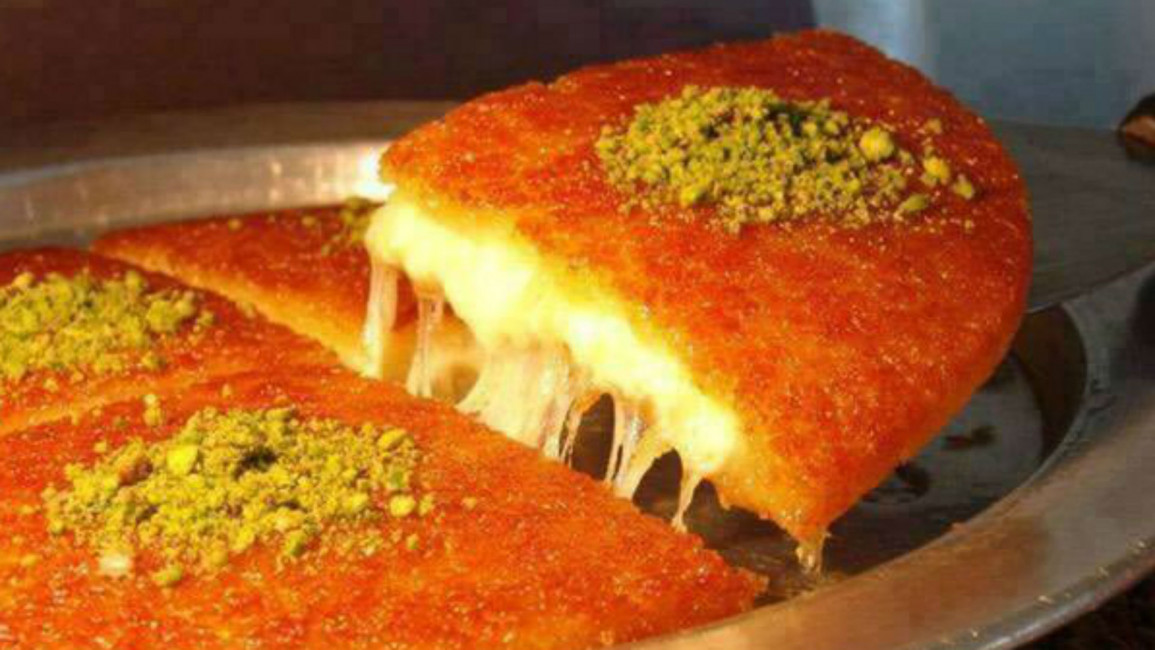
The Palestinian pride behind the sweet journey of knafeh
With Ramadan being in its first week, the Palestinian dessert knafeh is sitting on tables of households all over the Middle East. Knafeh lovers edge in anticipation for the moment they can break their fasts and indulge themselves in the cheesy, sugary delicacy that has been playing on their minds throughout the day.
Knafeh, which originates from the Palestinian streets of Nablus was founded in the early parts of last century. Since then, Palestinians have used it as a staple for all good occasions. In engagement parties and weddings, the sugary bonne bouche is rarely out of sight.
When someone graduates, buys a car, or even wants to reconcile with another after an argument, knafeh is delivered as a symbol to celebrate and anticipate good times.
— Jennine Khalik (@jennineak) 26 February 2017
" style="color:#fff;" class="twitter-post-link" target="_blank">Twitter Post
|
It's originally made with Nabulsi cheese, a cheese that is one of Palestine’s most popular white brined cheeses and topped with either sugar syrup soaked noodles (knafeh kheshne) or semolina dough (knafeh na’ama).
Before the sugary toppings, however comes a layer of heated cheese that has been soaked in sugar syrup, made to stretch as far as the arm can reach. The dessert is marinated with either rose water or orange blossom water, complimenting the surge of sugar with small hints of salt from the cheese perfectly.
Palestinians pride themselves in their feel good dish, and are quick to smile in a way that says “this came from us” every time their eyes meets this wonderful celebration of all things sweet, but this doesn’t mean there are no variations of the dessert.
Modern takes
One of the most common variations of knafeh is replacing Nabulsih cheese with ashta, a Lebanese clotted cream with rose water. However, more recently, there have been more creative takes on the dessert, including chocolate, apple and an ice cream-augmented version.
While the world was going crazy over red velvet three years ago, Arabs took it upon themselves to make red velvet knafeh.
|
|
And of course, nutella knafeh came to the scene.
— Wæl Swid (@waelswid) 23 July 2013
" style="color:#fff;" class="twitter-post-link" target="_blank">Twitter Post
|
Even vegan variations have become more popular, with people increasingly relying on plant based diets. Palestinians in their display of national pride and love for all things authentic have even taken the time to try to mimic the taste of knafeh with vegan only ingredients.
Palestinian-Syrian blogger Zena Hassoun has even claimed her family were unable to distinguish between her vegan knafeh and the original Nabulsi cheese knafeh with her recipe.
#MakeKnafehNabulsiAgain
However, not all Palestinians are particularly fond of the modern variations.
— رِناد (@Renad_Najm) 24 April 2016
" style="color:#fff;" class="twitter-post-link" target="_blank">Twitter Post
|
With Palestinians being known for holding onto their roots and taking pride in their identity, the modifications of knafeh are seen as a step back from what is a Palestinian staple, only to accommodate to the tastebuds of the bourgeoisie.
— نغم (@palesyriangurl) 20 January 2017
" style="color:#fff;" class="twitter-post-link" target="_blank">Twitter Post
|
Though, can we really blame them? When knafeh has accompanied milestones, built memories and preserved a culture that holds the world's largest refugee group, surely wanting to sustain the original dessert isn't too much to ask?




